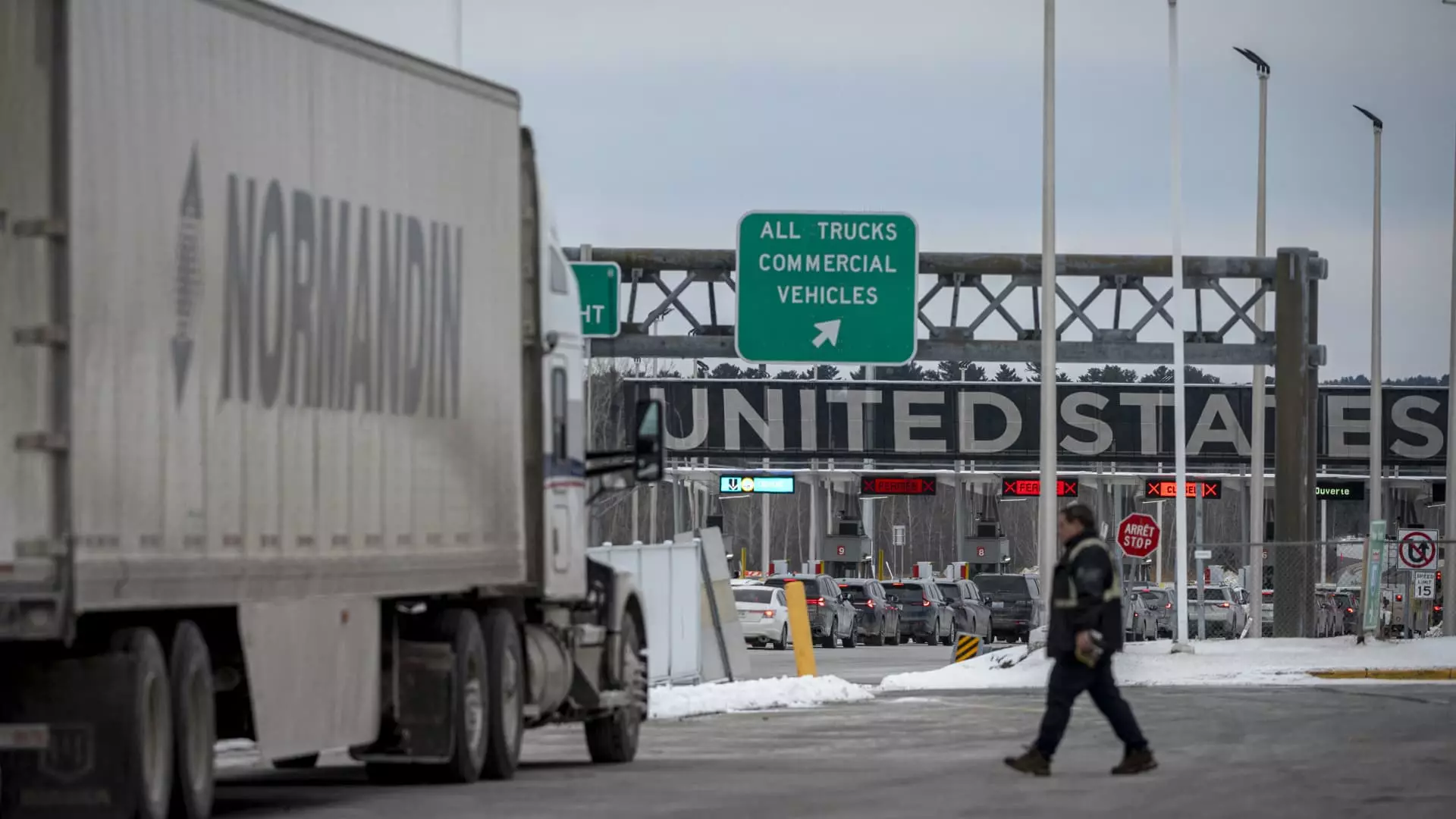The recent announcement of tariffs on key trading partners by the Trump administration has ignited extensive discussions among economists regarding their potential impact on the U.S. economy. Effective tariffs—25% on imports from Canada and Mexico and 10% on goods from China—have raised significant concerns not only about rising prices for consumers but also about the broader implications for monetary policy. The looming question centers around how these tariffs will affect inflation and interest rates, crucial factors that influence economic health and consumer behavior.
Economists have placed substantial emphasis on the inflationary consequences of these tariffs. The expectation is that, if implemented persistently, tariffs could push consumer prices upward, with projections suggesting an increase of 0.5% to 1% in overall inflation rates through 2026. This uptick is attributed to the tariffs affecting core prices, as represented by the Personal Consumption Expenditures Price Index—the primary gauge employed by the Federal Reserve to monitor inflation. Higher inflation could result in a significant shift in monetary policy, especially given the Fed’s dual mandate to maintain price stability while fostering maximum employment.
The balance that the Fed seeks to maintain could become increasingly tenuous if inflation rises without a corresponding recovery in economic growth. The prevailing view among specialists is that sustained high inflation would impede the Federal Reserve’s ability to lower interest rates—a strategy that had been anticipated due to sluggish economic indicators. In this scenario, consumer borrowing costs across credit cards and loans remain elevated, potentially stifling consumer spending and overall economic growth.
As the economic situation unfolds, the Federal Reserve finds itself in a challenging position. With the backdrop of heightened uncertainty regarding whether these tariffs will be fully enacted or modified, Fed officials have expressed caution in making definitive policy moves. Insights from Federal Reserve Bank of Boston President Susan Collins underscore the volatile environment, illustrating the unpredictable nature of government-imposed tariffs and their cascading effects.
Additionally, the temporary withholding of tariffs on Mexico following President Trump’s discussions with Mexican leadership brings into sharper focus how quickly the landscape can shift. This interim pause may provide some breathing room, but it does little to mitigate the overall unpredictability associated with tariffs on Canada and China.
In addition to inflationary concerns, economists are analyzing the long-term repercussions these tariffs could have on the U.S. Gross Domestic Product (GDP). J.P. Morgan has forecasted that proposed tariffs could threaten a reduction in GDP growth by 0.5% to 1% through 2026. Such a downturn reflects the complex dynamics of trade relations, suggesting that while tariffs might aim to protect American jobs and industries, they could simultaneously hinder growth and create a drag on the larger economy.
This projection brings forth the possibility that the negative ramifications on GDP may eventually compel the Fed to consider interest rate reductions—an ironic twist in the narrative surrounding trade protectionism. If tariffs are proven to stifle economic activity substantially, it may necessitate monetary policy adjustments designed to stimulate growth despite rising price levels.
The interplay between tariffs, inflation, and monetary policy paints a complex picture that highlights the challenges facing the U.S. economy. While some proponents of tariffs argue for their potential benefits in protecting domestic industries, the broader implications suggest an intricate balancing act for the Federal Reserve. As the economic landscape evolves, consumers, businesses, and policymakers alike must navigate the turbulence created by these tariffs, keeping a close watch on inflation trends and their subsequent influence on interest rates. The economic narrative is thus fraught with uncertainty, illuminating the delicate balance between trade policy and economic health in contemporary America.

